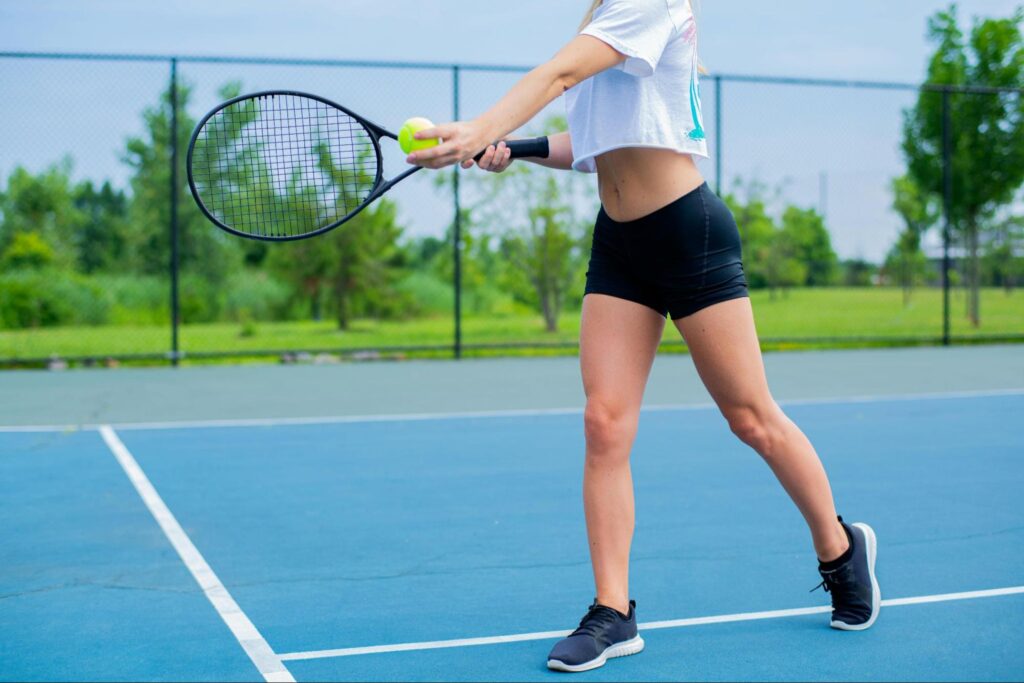Posture, often overlooked in casual sports play, plays a crucial role in maximizing sports performance and is fundamental in professional athletics.
Proper posture affects not only an athlete’s agility and power but also their overall ability to perform consistently and safely.
Biomechanics of Posture
The biomechanics of posture refers to the study of how body parts coordinate and force is applied during athletic movements.
Proper alignment of the spine, limbs, and joints is essential for optimal power output and efficiency. When athletes maintain correct posture, they can distribute forces more evenly across their body, minimizing stress and maximizing the generation of force.
This alignment is crucial, whether for a golfer achieving the perfect swing arc or a runner optimizing their stride length and frequency.

https://www.physio-pedia.com/Posture
Relationship Between Posture, Muscle Efficiency, and Energy Conservation
Posture directly impacts muscle efficiency. Well-aligned posture ensures that muscles are used at their best mechanical advantage, allowing for more powerful and sustained movements with less fatigue.
A runner with upright posture can engage their core and leg muscles more effectively, reducing the energy spent per stride. This not only conserves energy but also reduces the overall effort required, which can enhance endurance and performance in prolonged sports activities.

By understanding the biomechanical aspects of posture and its effects on muscle efficiency and energy usage, athletes can significantly improve their performance and reduce the risk of injury.
This foundation sets the stage for exploring how posture impacts specific sports, which will be discussed in the following sections of the article.
Impact of Posture in Various Sports
Golf
In golf, the stance and alignment are pivotal for executing an effective swing and minimizing the risk of injuries. A proper golf posture involves a slight bend at the hips, a straight back, and knees that are slightly flexed, positioning the golfer for optimal balance and swing power.
This posture allows for a smoother rotation of the spine and a fuller extension in the swing, leading to more consistent and powerful shots.

Maintaining this posture throughout the game can also prevent common golf injuries, such as those to the lower back and shoulders, by ensuring that the force of the swing is distributed correctly.
Running
For runners, posture can greatly influence running efficiency, speed, and injury prevention. An ideal running posture includes a slight forward lean from the ankles, a straight back, and a relaxed head position, which together enhance the runner’s stride length and frequency.
This posture helps maintain a center of gravity that promotes better propulsion and reduces the impact on the knees and joints, thereby decreasing the risk of overuse injuries.

Correct posture also aids in better lung expansion, allowing for improved oxygen intake and endurance.
Swimming
In swimming, body alignment is crucial as it affects hydrodynamics, influencing speed, breathing efficiency, and stamina. A streamlined posture in the water, with a straight spine and tight core, reduces drag and allows for smoother and faster swimming.

Proper alignment helps swimmers maintain an effective breathing technique, which is vital for stamina and overall performance. It also ensures efficient movements across different strokes, optimizing the use of energy and reducing fatigue.
Improving Posture for Better Performance
Improving athletic posture is essential for performance enhancement and injury prevention. Athletes can benefit from general posture-improving exercises such as yoga, Pilates, and targeted strength training that focuses on the core, back, and shoulders.
These activities help develop the muscle groups that are crucial for maintaining proper posture in any sport.

https://www.healthdirect.gov.au/how-to-improve-your-posture
Professional guidance from coaches or physiotherapists is invaluable in achieving and maintaining optimal sports posture.
These experts can provide personalized assessments and corrective exercises tailored to the needs of each athlete. They also monitor progress and adjust techniques as needed to ensure that athletes are performing at their best with minimal risk of injury.
These strategies for improving posture not only boost performance but also play a significant role in an athlete’s long-term health and career longevity.
Wrapping Up
Proper posture is a cornerstone of excellence in any sport, directly impacting an athlete’s power, agility, and endurance while safeguarding against injuries.
By understanding and implementing the right posture techniques, athletes can significantly enhance their performance across a range of activities, from golf to swimming to running.
Ultimately, through dedicated practice, professional guidance, and consistent application of posture principles, athletes can unlock their full potential and achieve long-lasting success in their sports careers.
